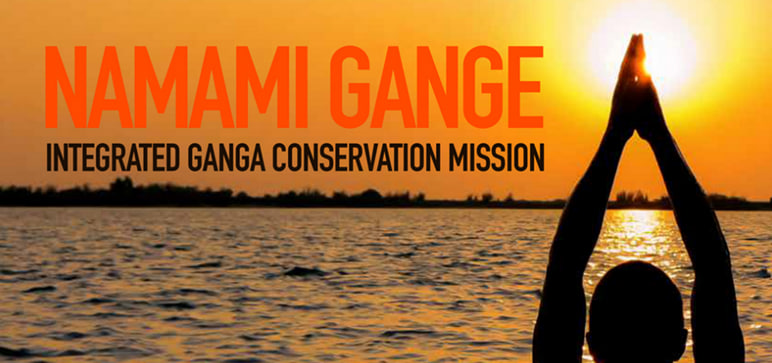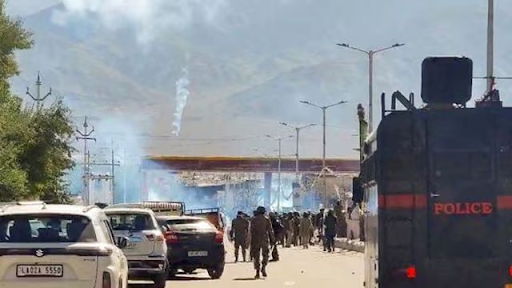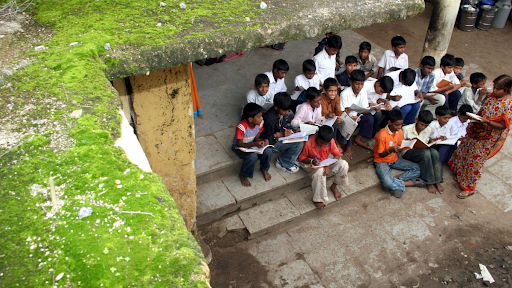Description

Copyright infringement not intended
Context: Over 4,000 volunteers from the Namami Gange programme have been patrolling the river to prevent pollution and poaching and to ensure that the river's ecology and fauna remain intact; in exchange, the Wildlife Institute of India has provided them with livelihood training.
Details
- The Ganga is one of the most sacred and biodiverse rivers in the world. It flows through five states; Uttarakhand, Uttar Pradesh, Bihar, Jharkhand, and West Bengal
- It provides water and livelihood to millions of people. However, the river also faces many threats, such as pollution, overexploitation, habitat loss, and climate change. To protect and conserve this vital resource, a group of volunteers has taken up the role of Guardians of the Ganga.
Ganga Praharis
- The Guardians of the Ganga, or Ganga Praharis, are self-motivated and trained volunteers from among the local communities along the river.
- They are part of a project initiated by the National Mission for Clean Ganga and the Wildlife Institute of India under the Namami Gange programme, which aims to clean and rejuvenate the river and its ecosystem.
Role
- The Ganga Praharis work for biodiversity conservation and cleanliness of the river with the ultimate objectives of restoring the 'Nirmal' (clean) and 'Aviral' (uninterrupted) flow of the river.
- They conduct regular patrolling, monitoring, awareness campaigns, and clean-up drives in their respective areas.
- They report any illegal activities, such as poaching, fishing, or dumping of waste, to the authorities.
- They help in identifying and documenting the various species of flora and fauna that inhabit the river and its banks.
- They educate and inspire citizens about the importance and value of the river for their well-being and prosperity.
- They participate in various training programmes and workshops organized by the Wildlife Institute of India to enhance their knowledge and skills in biodiversity conservation and management.
Significance
- The Ganga Praharis project is a unique example of community engagement and empowerment for environmental protection.
- The task force has over 4,000 volunteers in 100 districts across Uttarakhand, Uttar Pradesh, Jharkhand, Bihar, and West Bengal.
- It shows how ordinary citizens can become agents of change and make a difference in saving one of the most precious natural resources on Earth.
- It aims to expand its reach and impact beyond the Ganga to other rivers in India and around the world.
.jpeg)
Namami Gange programme
- The Namami Gange Programme is an integrated conservation mission, approved as a flagship programme by the Union Government of India in June 2014 to accomplish the twin objectives of effective abatement of pollution, conservation and rejuvenation of the National River Ganga.
- The programme aims to engage with the community and connect various interest groups including scientists, technology companies, investors and community members to restore the purity and biodiversity of the Ganga River.
Main pillars
- Sewerage Treatment Infrastructure: To create adequate capacity for treating sewage and industrial effluents before they enter the river.
- River-Front Development: To improve the aesthetics and amenities of the ghats and crematoria along the river banks.
- River-Surface Cleaning: To collect and dispose of floating solid waste from the river surface.
- Bio-Diversity Conservation: To protect and restore the endemic and endangered aquatic species of the river ecosystem.
- Afforestation: To increase the green cover and reduce soil erosion in the catchment area of the river.
- Public Awareness: To sensitize and educate the public about the importance and benefits of a clean and healthy Ganga.
- Industrial Effluent Monitoring: To ensure compliance and enforcement of pollution norms by industries discharging effluents into the river.
- Ganga Gram: To develop model villages along the river with improved sanitation, waste management and livelihood opportunities.
Some of the notable achievements are;
- Out of 341 projects, 147 (or 43%) are completed as of January 2023.
- Work is under construction for creating a sewerage capacity of 5658.37 million litres per day (MLD).
- 270 ghats and crematoria have been constructed, modernized or renovated under 71 projects.
- River surface cleaning machines have been deployed at 11 locations to collect floating waste.
- High biodiversity areas have been identified in the river Ganga for focused conservation action.
- Rescue and rehabilitation centres have been established for aquatic species such as dolphins, turtles and fish.
- The floating interpretation centre “Ganga Tarini” and interpretation centre “Ganga Darpan” have been established for developing awareness of biodiversity conservation and Ganga rejuvenation.
- Chacha Chaudhary, a popular comic book character, has been declared the mascot of the Namami Gange Programme to appeal to children and youth.
- The world's longest river cruise - MV Ganga Vilas - was flagged off by Prime Minister in Varanasi to promote tourism and culture along the river.
Significance
- It is a holistic and integrated approach to address the multifaceted challenges faced by the river.
- It encompasses various components such as sewage treatment, industrial effluent management, riverfront development, biodiversity conservation, public awareness and participation, and institutional strengthening.
- It also leverages the latest technologies and innovations to enhance the efficiency and sustainability of the interventions.
Challenges
- Lack of adequate operation and maintenance of the sewage treatment plants and other infrastructure created under the programme, leading to sub-optimal performance and wastage of resources.
- Inadequate coordination and convergence among various stakeholders such as central and state governments, local bodies, industries, civil society, etc., resulting in duplication of efforts and gaps in service delivery.
- Insufficient enforcement of laws and regulations to prevent and penalize the polluters and violators of the river's sanctity.
- Low level of awareness and involvement of the local communities and citizens in the protection and preservation of the river.
Steps need to be taken
Strengthen coordination and monitoring
- Namami Gange programmes involve multiple agencies, states, and stakeholders, which can lead to duplication, delays, and conflicts.
- There is a need for better coordination and communication among all the actors involved, as well as regular monitoring and evaluation of the progress and impact of the projects.
- The National Mission for Clean Ganga (NMCG) should play a key role in ensuring accountability and transparency in the implementation of Namami Gange programmes.
Focus on tributaries and rural areas
- The Ganga River is fed by many tributaries that also carry a significant amount of pollution and waste from various sources. Moreover, many rural areas along the river lack adequate sanitation and waste management facilities, which contributes to the degradation of the river quality.
- Therefore, Namami Gange programmes should not only focus on the main stem of the river, but also on its tributaries and rural areas, where more interventions are needed to improve sewage infrastructure, solid waste management, and community participation.
Enhance public awareness and participation
- One of the main pillars of Namami Gange programmes is public awareness and participation, which is essential for creating a sense of ownership and responsibility among the people for the conservation and rejuvenation of the river. However, there is still a lack of awareness and involvement among many sections of society, especially the youth, women, and marginalized groups.
- Namami Gange programmes should leverage various platforms and channels, such as media, education, culture, religion, and tourism, to reach out to different audiences and engage them in various activities and campaigns related to the river.
Promote innovation and research
- Namami Gange programmes have an opportunity to foster innovation and research in various fields related to the river, such as science, technology, engineering, environment, social sciences, arts, and humanities.
- There is a need for more collaboration and support among academic institutions, research organizations, the private sector, civil society, and government agencies to generate new knowledge and solutions for the challenges faced by the river.
- Namami Gange programmes should also encourage and showcase best practices and success stories from within India and abroad that can inspire and inform future actions.

Conclusion
- The Namami Gange Programme is a visionary and ambitious initiative that aims to transform the Ganga River into a symbol of national pride, cultural heritage and ecological health. It is a collaborative effort that involves multiple ministries, agencies, states, local bodies, civil society organizations, private sector partners and citizens. It is also aligned with the global goals of sustainable development and climate action.
Must Read Articles:
National Mission to Clean Ganga: https://www.iasgyan.in/daily-current-affairs/national-mission-to-clean-ganga
State of Ganga: https://www.iasgyan.in/blogs/state-of-ganga
|
PRACTICE QUESTION
Q. The Namami Gange programme is a flagship initiative of the Government of India to rejuvenate the Ganga River and its tributaries. What are the main challenges and opportunities for the successful implementation of the Namami Gange programme and what are the possible ways forward to overcome them?
|
https://epaper.thehindu.com/ccidist-ws/th/th_delhi/issues/37076/OPS/GK1B8RFN3.1.png?cropFromPage=true











